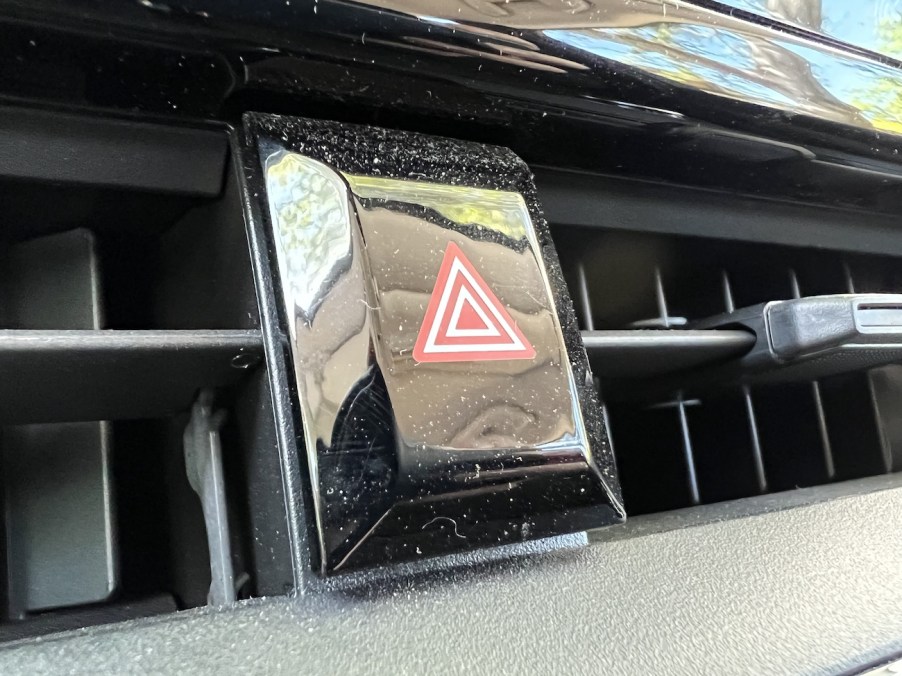
When to Use (and Not Use) Your Car’s Hazard Lights
Your car is filled with all kinds of buttons and knobs that probably don’t use on a daily basis. One such button is the one for the hazard lights – also known as the emergency flashers. While these lights are basically to be used in case of an emergency, there are some times when you should use them and other times when you shouldn’t.
When to use your car’s hazard lights

The most common way to make use of your car’s hazard lights is when you’re forced to drive slowly on the road or pull over. The hazard lights will warn other drivers that your vehicle might endanger other drivers on the road. According to The News Wheel, here are a few other times that using your hazard lights is a good idea:
- Your vehicle is broken down: If your car breaks down and you’re pulled over on the side of the road awaiting a tow truck, then that’s the best time to use the hazard lights.
- A funeral procession: If your car is part of a funeral procession, then some states say that it’s OK to turn on the hazard lights. Doing so will alert other drivers that your car is part of the procession and they should adjust their speed accordingly.
- Get pulled over by a cop: If you are being pulled over by a police officer – or being waved down by one – then it’s a good idea to turn on the hazard lights. Doing so will show the cop that you’ve acknowledged them and are pulling over.
- Changing a flat tire: If your car gets a flat tire, then it’s a good idea to turn on the hazard lights. Safety is a primary concern and the flashing lights will make your car more visible to other drivers – especially at night or in the early morning hours.
When to avoid using your car’s hazard lights

Now that we know when to use your car’s hazard lights safely, it’s worth it to know when not to. Here are a few scenarios when you should refrain from pushing that button with the triangle on it:
- During inclement weather: It can be tempting to turn your car’s hazard lights during heavy rainfall or a snowstorm. However, doing so can cause some confusion to other drivers on road. Also, using the hazard lights can disable the turn signals, which can prevent other drivers from knowing if you’re switching lanes.
- Illegally parking: Many drivers like to park in a handicap spot or take up two parking spots and flip on their hazard lights to show they’re “only going to be a minute.” Don’t be that driver. It’s illegal to park illegally and switching on the hazard lights doesn’t make it legal.
- During heavy traffic: Some drivers switch on the car’s hazard lights to warn other drivers of heavy traffic ahead. Don’t do that. If anything, it just confuses drivers and disables your car’s turn signals, which can cause an accident.
- An alternate turn signal: Speaking of turn signals, be sure to use them if your car has an issue and you need to exit a highway. Using your car’s hazard lights in lieu of them can confuse drivers on the road.
How to prevent having to use your car’s emergency flashers on the road
Having to use your hazard lights is important in the case of emergencies. At the same time, preventing the need to use them is key. Reader’s Digest pointed out the following ways that you can avoid any emergencies before a road trip:
- Inspect your car: Do a walk around on your car before setting out for a long trip. Check the car’s tires, brake lights, and hazard lights to ensure that everything is working properly. It’s also a good idea to do this once a month.
- Check your car at rest stops: If you’re on a road trip, it’s a good idea to do a walk around when you pull over at a rest stop.
- Check the road conditions and weather: Be sure to check the road conditions and weather on your trip before you embark on it. Doing so can help you navigate through tough areas and prevent an emergency.
You may never have to use your car’s hazard lights much during the time that you own it. But it’s important to know when to use them. Doing so can save your life as well as others on the road.



